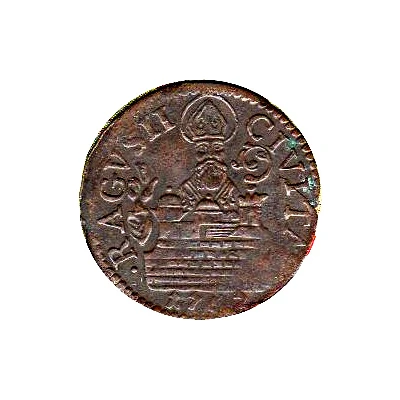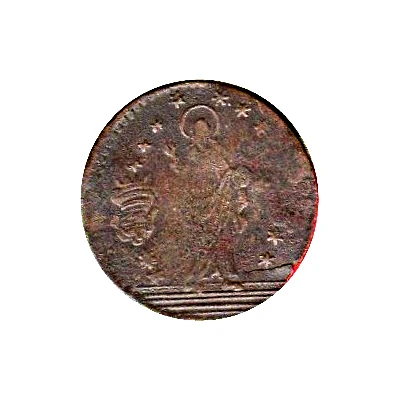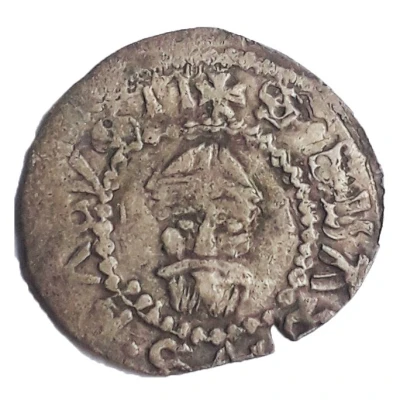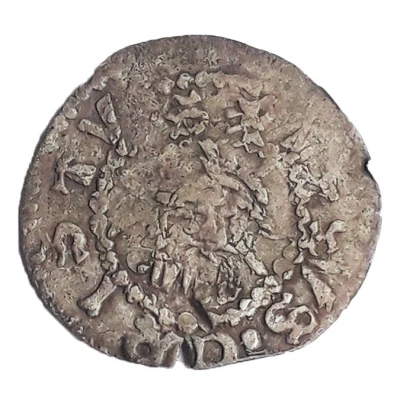


1 Soldo
| Copper | 1.90 g | 21 mm |
| Issuer | Republic of Ragusa (Croatian States) |
|---|---|
| Period | Republic (1294-1803) |
| Type | Standard circulation coin |
| Years | 1678-1797 |
| Value | 1 Soldo (1⁄360) |
| Currency | Tallero (1294-1803) |
| Composition | Copper |
| Weight | 1.90 g |
| Diameter | 21 mm |
| Shape | Round |
| Orientation | Coin alignment ↑↓ |
| Demonetized | Yes |
| Updated | 2024-10-04 |
| Numista | N#78700 |
|---|---|
| Rarity index | 82% |
Reverse
Christ flanked by designs within circle of stars, no lettering. On the left and on the right of the Christ there are two small Coat of Arms of Ragusa.
Comment
Varieties exist. In this comment they will be arranged after years of minting.Type 1: Without year
Obverse lettering: MONETA CIVITA(TIS) RAGUSII
Years of minting: 1678
Diameter: 21-22 mm
Weight: 1.904 g
Type 2: With year
Obverse lettering: CIVITAS RAGUSII, except year 1682 where lettering is the same as Type 1 lettering.
Years of minting: 1682-1797
Diameter: 20-23 mm
Weight: 1.877 g
Variations: Lettering can start at the left or at the right, from 1791 to 1797 always at the left. Lettering variations: CIVITAS/CIVITA, RHAGUSIUM/RACUSI. Right hand of the saint can be in different positions. Wall of the city can be built of three to five rocks. Saint with or without aureole. Irregular letters or stars with five to eight points. Letters M or G or without them. Different edge variations and stars distributions above and under Coat of Arms from 3+0 to 10+3.
Type 3: re-minting
Hungarian uprise under Francis II Rákóczi minted Hungarian Polturen from 1704 to 1707. In 1708 uprise was overthrown and Hungarian Polturen were used in Ragusa to mint their coins. Therefore on Soldo with year 1712, 1720 and 1723 parts of Hungarian lettering and details can be seen.
Interesting fact
The 1 Soldo coin from the Republic of Ragusa (Croatian States) made of Copper weighing 1.90g has an interesting fact that it was used as a currency in the Republic of Ragusa, which was a medieval state that existed from the 14th to the 19th century and was located in the southern part of modern-day Croatia. The coin was minted between 1678 and 1797 and was used for everyday transactions. Despite its small weight, it was an important part of the economy of the time.

